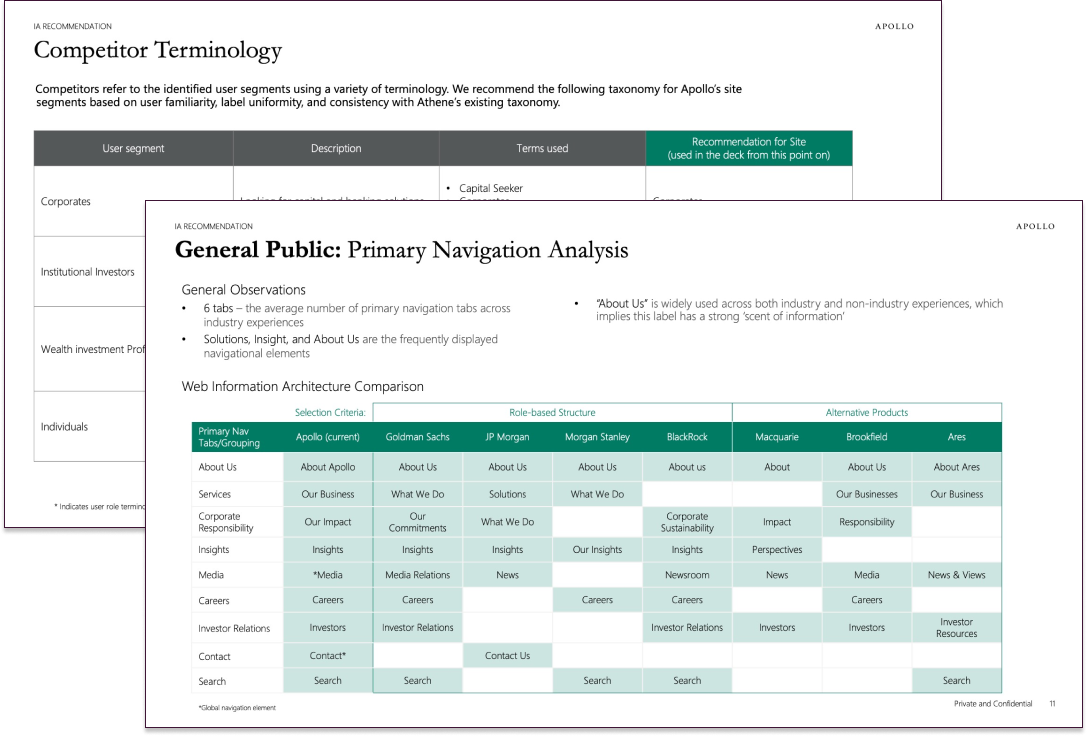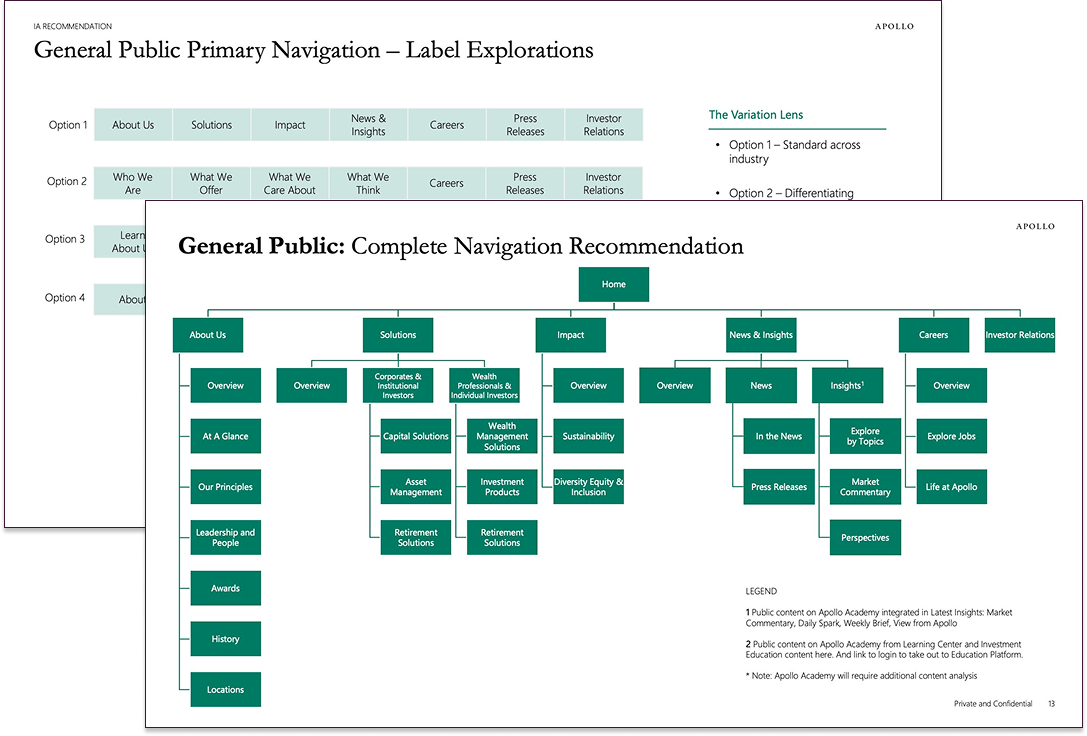Apollo | Unifying Disparate Experiences
The Project
Unify nine disconnected web properties into one streamlined platform. Apollo’s digital experience was scattered across separate websites—each with its own structure, tone, and taxonomy. This created a disjointed experience for users and diluted the strength of the brand.
The Strategy
Audit. Align. Restructure. I led the information architecture effort to consolidate content into a single, role-based platform. I used user research, competitive insights, and cross-functional workshops to build a modern IA that made the site more navigable, credible, and user-focused.
Why It Matters
Apollo’s site redesign wasn’t just a reorganization, it was a reinvention. This work:
Reduced confusion and redundancy across user journeys
Aligned fragmented experiences to a clear IA framework
Boosted engagement by 11% and improved content discoverability
Delivered a scalable system that now anchors Apollo’s evolving digital presence
Services
Information Architecture, Sitemap Design, Taxonomy Design, Content Audit, Content Strategy
Uncovering the Problem
Apollo’s disconnected existing ecosystem made users work too hard. With nine separate websites—each serving slightly different content and audiences—users struggled to find what they needed. There was no unified taxonomy, content overlapped, and navigation was inconsistent.
I began by auditing over 120 pages, identifying where duplication, inconsistency, and siloed content were undermining the experience.
Finalized scope of web properties to bring into the unified experience.
Learning the Landscape
I led a competitive analysis of 10 other financial firms and investment platforms to inform the new strategy.
This uncovered best practices in labeling, hierarchy, and content grouping—and revealed how Apollo could stand out by simplifying and clarifying its approach.
Sample of research findings and competitive IA insights.
Rebuilding Around Users
Rather than creating a one-size-fits-all experience, I proposed a role-based architecture tailored to Apollo’s key audiences: investors, clients, and partners. This approach grounded the IA in user needs, not internal structures.
Working with product, design, and SME teams, I:
Defined the top-level navigation
Streamlined taxonomy and labels
Mapped page relationships to support common user flows
Created a scalable sitemap to support long-term content growth
Overview of proposed IA and navigation recommendations.
My Impact
Delivered a unified, modern information architecture, consolidating fragmented investor touchpoints into a seamless journey.
Increased user engagement by 11% through improved usability and intuitive wayfinding.
Reinforced brand consistency and credibility through role-based navigation and clear content hierarchy.
Uncovered key structural patterns and competitive gaps by auditing 120+ existing pages and analyzing 10 competitor firm ecosystems.
Before and after comparison of initial sitemaps with our integrated sitemap proposal.
Lessons Learned
Disjointed sites confuse users and weaken trust.
Unifying content structure isn’t just a UX win, it’s a must-have for brand credibility.
When everything matters, nothing stands out.
Auditing 120+ pages showed how redundant, unfocused content overwhelmed users. Clarifying the architecture helped surface what mattered most.
IA bridges business and user goals.
A role-based framework wasn’t just a UX improvement, it aligned internal teams around a user-first strategy that also supported sales and client service priorities.
Snapshot of the Apollo.com homepage with both navigation menus expanded, showing how the new IA supports user roles and general discovery.




